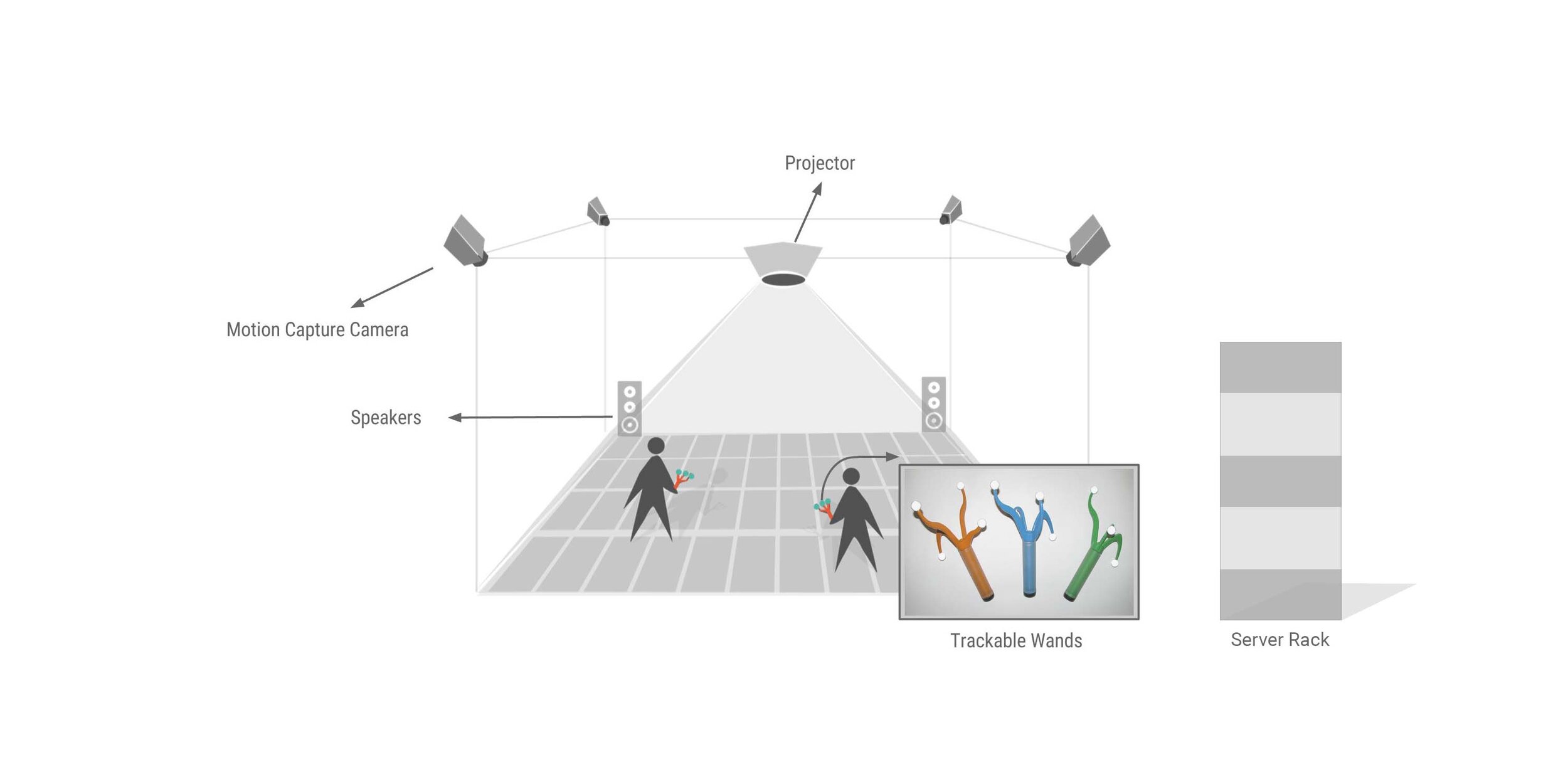Disclaimer: A mere mortal’s attempt to understand the cosmos.
Thread I: Why do I do what I do?
The reward is in the smile.
If you set aside the layers of abstractions in computing, the success metric comes down to a happy end user. And there’s a particularly heartening joy when that end user happens to be a middle school kid.
In 2015, I joined AweSeven, a project to create engaging educational games in the SMALLab (Situated Multimedia Arts Learning Lab) environment for the Elizabeth Forward School District in Pittsburgh. It focused on math and vocabulary games for 3rd to 8th grade students. Teachers were the second set of users, for whom we created easy-to-use customization tools to optimize the game content for targeted learning.
Thread II: SMALLab
SMALLab is an embodied learning environment. Motion-capture technology tracks students’ 3D movements as they learn in an immersive, interactive space. For example, as students drop objects to learn about the physics concept of velocity, they can hypothesize that faster actions lead to louder sounds. Graphs and equations illustrate their motions in real-time. They can feel the weight of an object in their hand as they interact in real physical space.






Thread III: Team
Team AweSeven is a talented group of people from different backgrounds, with a clear, defined objective of revolutionizing education. Each teammate was a master of his or her trade and domain.
“Team lunches are the key to great team chemistry.”
Team Members:
Ruiqing Liu, Rishit Bhatia, Kuang-Hsin Liu, Jingyu (Irenee) Liu, Jaekyun (Brandon) Kang, Feiran Wang & Kshitij Kumar.
Faculty Instructors:
Shirley J Saldamarco & Melanie Lam.
Thread IV: Goals:
Goals I: Fun
The SMALLab epitomizes an environment where education is not merely a one-way process but an interactive and playful one. Neurology research suggests that play is not just beneficial to learning but, by many reports, required for authentic, long-term concept acquisition.
Goals II: Educational
New concepts or ideas can be challenging for children to learn. Team AweSeven aimed to create an experience where joy and comfort are impregnated in the learning process to make it more effective. Although learning efficacy is a difficult parameter to gauge during development, we coordinated with our teachers and provided them with useful, efficient educational tools.
Goals III: Customizable
All of our games were accompanied by an easy-to-use customization tool for teachers. This gave the teachers full control over the content in the game and made the game flexible enough to target a wider demographic range, if needed. This also made our games non-monotonous and unique every time they are played.
Thread V: Insight
A) Proto > Playtests > Iterate > Repeat (fail fast, learn fast)
Our strategy was simple. Prototype really fast. It’s not important to do things right, but rather, do the right things.
Take the build for a playtest. Get the input, iterate, and revisit.
For the three games we made, the level of complexity, in terms of features and graphical fidelity, leveled up as we proceeded.
B) Customization
Understanding the needs of our second user base, i.e. teachers, was extremely crucial. To accommodate their feature request, we developed a customization tool for creating new content for different groups of students.
C) Hidden Bug
In one of our brainstorming sessions, the team came up with a core game mechanic of revealing certain game objects' characteristic traits only when the user integrated with it was a homerun. The mechanic utilized the team players’ ability to recollect an insight, which was shared amongst the team members. This demonstrated the importance of collaboration and gave each player a purpose.
D) Experience>Complexity
Like I said previously, the complexity of the contraption aside, when the lights go out and the game starts, the experiencer is the king/queen. When you are in the thick of the action in an immersive experience, the mind transcends into a different dimension of reality. It rests on the appeal of the game mechanic narrative.
Thread VI: Weta Experience
Every few years or so, I find myself in a project that leaves a positive, long-lasting impression on me - one that is, how should I say it, deeply satisfying. Like a perfect meal. There are many vectors that point to memorable moments: solid team chemistry, collaborative brainstorming, a good challenge, intriguing problem statements, and lastly, the joy of success.
It’s a feeling which can be a little difficult to characterize. The feeling where, having done the hard work (that, too, while having fun), you stand back, behind the stage, and watch the audience have a blast. In that moment, the project becomes more than a snippet on your resume. It becomes … a smile, for them and for you.
I like to call these projects “Weta Projects,” a term that I took from the production team behind the works of LoTR.
Lastly, knowing that after 5 years, halfway across the country, there are kids and teachers still having a blast with the project, gives me a unique joy and motivation.
After this project, I was able to exercise in the field of education a bit more by becoming a Teaching Assistant for 3D Graphics at the National High School Gaming Academy, which was a helpful learning experience for myself as well.
Thread VII: Note to Future Self
Do catch up with Team AweSeven.